Solar Installations Around the World: Where Will Solar Go Next?
[ad_1]
Electricity generated by the sun is more sustainable than fossil-fuel-generated power, such as that produced with coal or natural gas. Solar power is renewable and generates no emissions after the photovoltaic cells, panels, and related hardware have been manufactured and installed. As the number of solar energy installations around the world rises, solar is becoming more of a norm than an alternative. California requires the installation of solar panels on most new homes. And entire airports — even entire island nations — are powered solely by solar.
Solar power doesn’t need a lot of built infrastructure or technology: just the panels on supports, a meter, and a converter connected to the grid or the building. However, solar power does need a lot of space — and land is not always readily available. Thankfully, solar arrays can often be placed on land that’s already serving another purpose. And solar installations are popping up in a growing variety of locations. Here’s a round-up of some common and not-so-common locations where solar arrays are appearing around the world.
Commercial Rooftops
One of the most popular locations to install a solar array is on a roof: commercial, industrial, or residential. Many corporations are reducing their carbon footprint by incorporating solar panels into their building renovations or new building standards. In the U.S., the list of solar-powered corporations includes retailers and IT companies, among others.
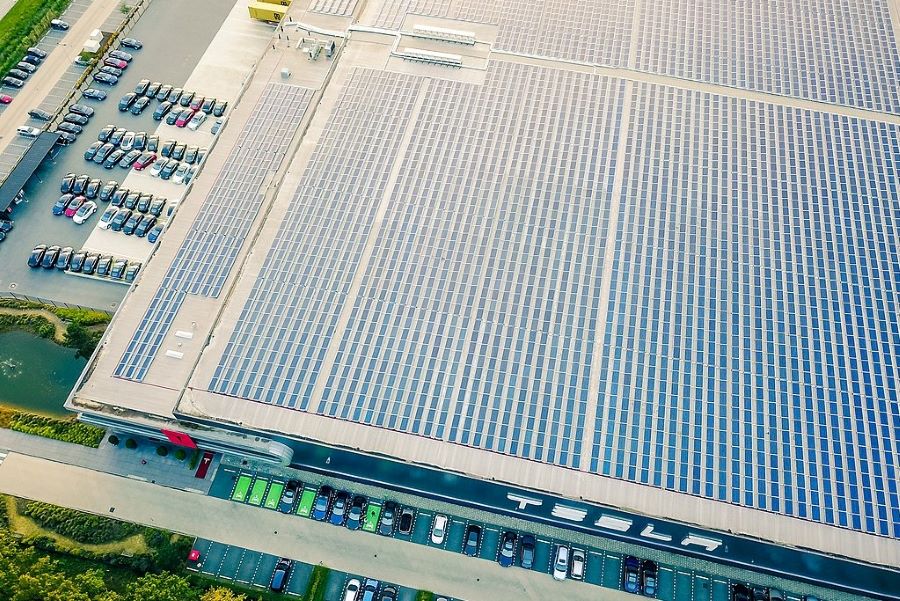
Offshore or Inland: Floatovoltaics
Solar panels can be installed on floating supports on bodies of water, usually lakes or ponds. Floatovoltaics are touted as beneficial to their associated water — providing shade that reduces water temperature, reducing evaporation, as well as reducing algae bloom growth (which is associated with high water temperatures). The water helps cool the panels, making them more efficient.
Floatovoltaics are great for farm ponds, wastewater bodies, or other places where they won’t affect aquatic life. We need more studies conducted to ensure that aquatic life is not harmed but so far, the solar installations seem to have little impact on aquatic life
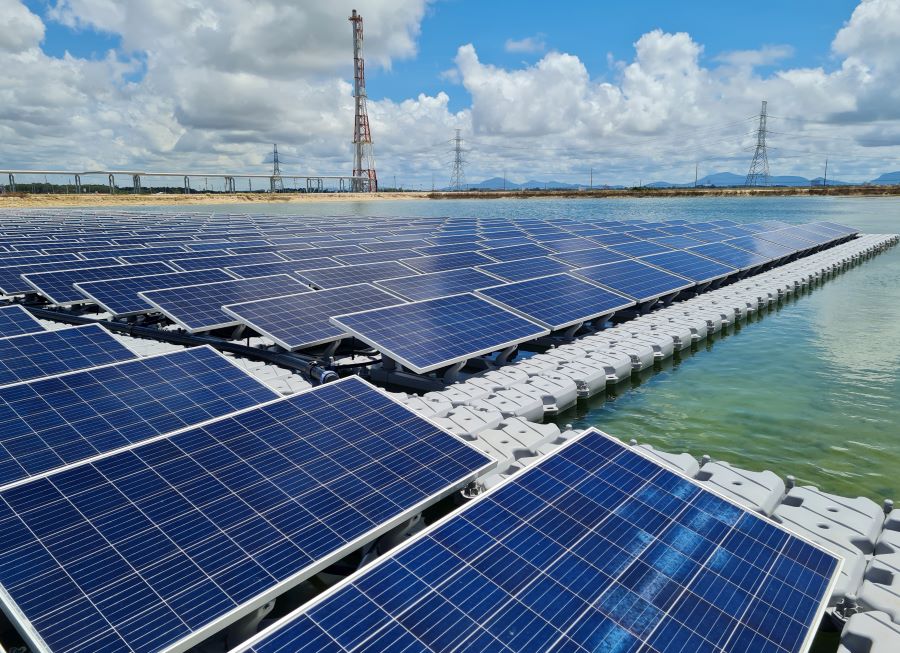
Agricultural Land: Agrivoltaics
Mixing agricultural land use with solar can be a big win-win. Both agriculture and solar need a lot of space to be most effective, so sharing space makes sense. In addition, the shared land use benefits the crops and the solar panels. The panels can be positioned to provide the crops with just the right amount of sunlight, while the plants help keep the panels cool. Although agrivoltaics works best for crops that thrive in partial shade, researchers continue to study which crops are most compatible with solar panels.
This shared land use also works well with livestock such as sheep and cows. The livestock “mows the grass” under the solar panels and also benefits from the shade that the panels provide.
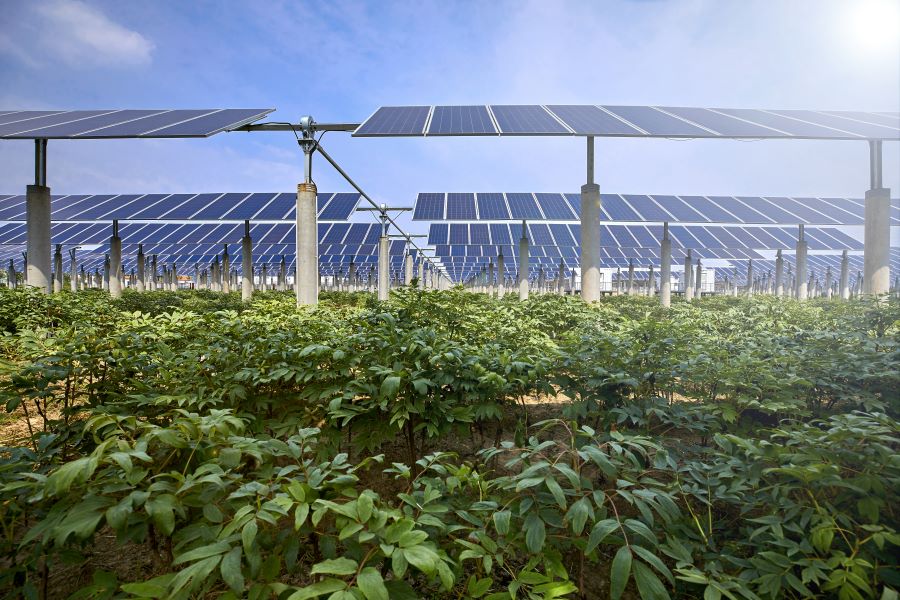
Landfills
There aren’t many ways we can reuse land that covers a landfill. For health and environmental reasons, the liner that seals off the contents of the landfill should not be disturbed. Therefore, the land is not usually developed with buildings or roads or even planted with trees. Landfills are often turned into parks or just sit as vacant land. But closed landfills also can make ideal locations for solar energy installations. Examples include a former landfill site in Germany that is sealed by a photovoltaic system and a large 4.5-megawatt solar project that’s slated for installation on a former superfund landfill site in New Jersey.
Bike Trails
In 2015, the city of Krommenie in the Netherlands opened the “SolaRoad,” a bike path paved with solar panels. Cyclists ride their bikes directly over smooth solar panels that feed the grid. This path was only about 100 meters and worked as a demonstration project, but based on the trail’s performance, more solar paths have been successfully built in the Netherlands and France.
While some tests have been performed on solar roadways with motorized vehicles, many are skeptical about the future of this technology for vehicular traffic.
Parking Canopies
Cover for parking lots is another efficient use of space in the form of parking canopies. Shading parking lots can reduce the heat island effect and help keep car interiors cooler. Parking lots often occupy more physical land space than a building and so this is an efficient use of space. Canopies can provide direct electricity generation for the associated buildings, for charging EVs, or provide power to the grid.
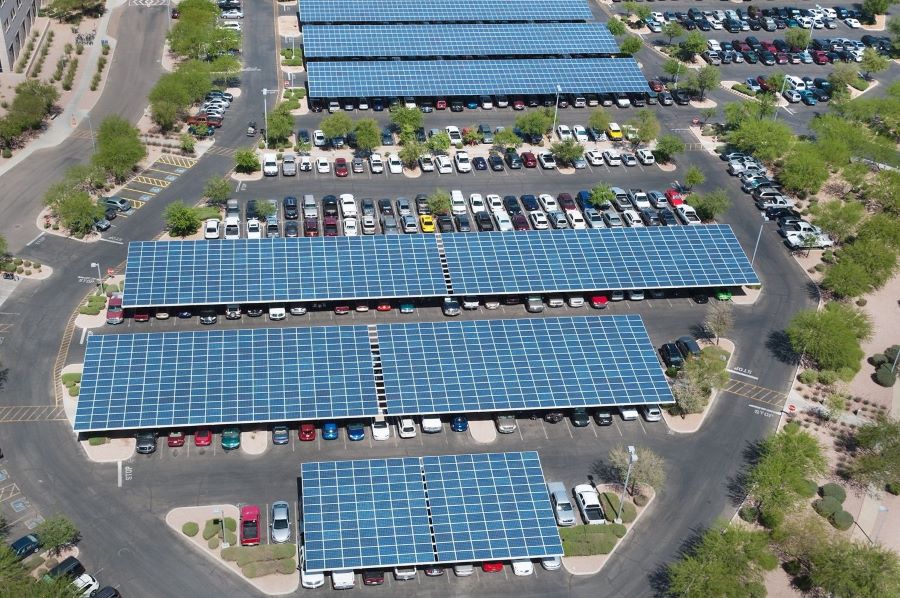
So Much More Solar
There’s nearly no end to where human creativity will place solar panels. There are solar boats, solar plains, solar trash cans, solar tents, solar trains, and even a panda-shaped solar installation. Of course, the International Space Station and other space exploration vehicles also make use of solar technology. The world needs more renewable energy with low emissions and electricity produced by the sun is one way to fill this need. We will only see the use of solar cells increase as well as the creative ways that we use them.
Feature image: solar panel installation at Zwickau University of Applied Sciences, Germany. Photo by André Karwath aka Aka, CC BY-SA 2.5, via Wikimedia Commons
[ad_2]
Original Post

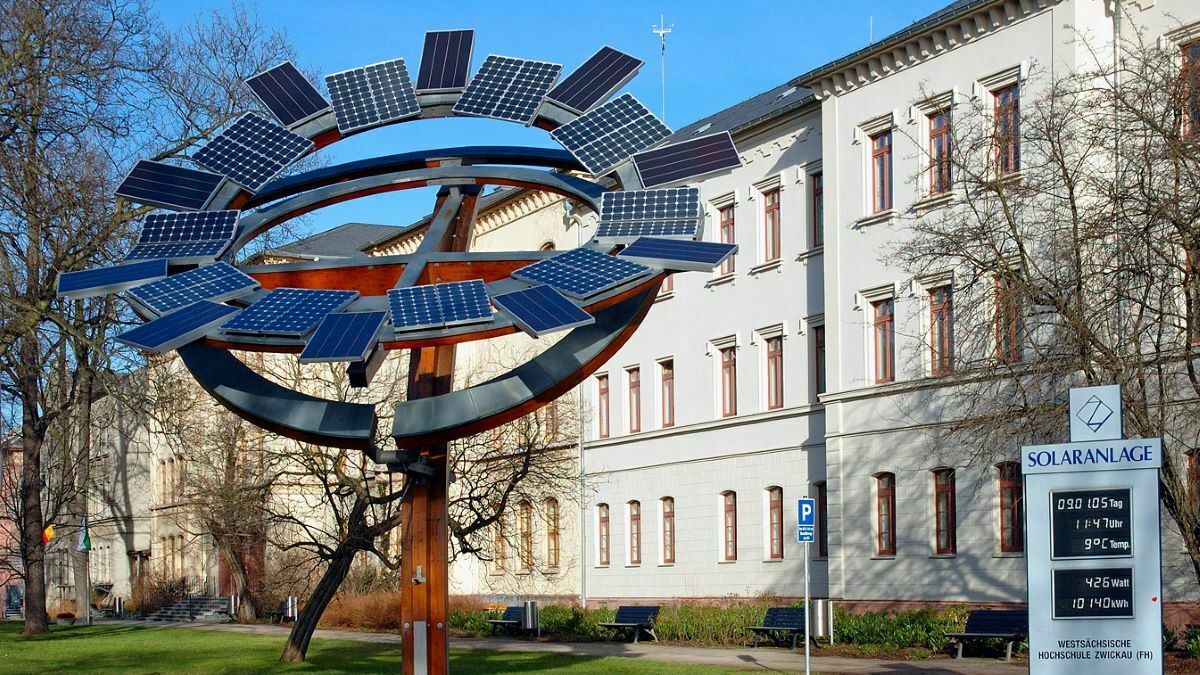



Hello this is somewhat of off topic but I was wanting to know if blogs use WYSIWYG editors or if you have to manually code with HTML. I’m starting a blog soon but have no coding expertise so I wanted to get advice from someone with experience. Any help would be enormously appreciated!
Hey very cool web site!! Guy .. Beautiful .. Wonderful .. I will bookmark your web site and take the feeds additionally…I’m happy to search out so many useful info here in the post, we’d like work out more techniques in this regard, thanks for sharing. . . . . .
Absolutely written articles, thank you for entropy. “The earth was made round so we would not see too far down the road.” by Karen Blixen.
I was just looking for this info for some time. After 6 hours of continuous Googleing, finally I got it in your site. I wonder what’s the lack of Google strategy that don’t rank this kind of informative web sites in top of the list. Normally the top websites are full of garbage.
Throughout the awesome pattern of things you’ll secure an A with regard to effort. Where you confused me was first on the details. You know, they say, details make or break the argument.. And it couldn’t be much more accurate at this point. Having said that, allow me reveal to you what exactly did give good results. The text can be highly convincing which is possibly the reason why I am making an effort in order to comment. I do not really make it a regular habit of doing that. Second, although I can see a leaps in logic you make, I am not necessarily confident of exactly how you seem to connect the points that produce the actual final result. For right now I will, no doubt subscribe to your point however trust in the near future you actually link the dots better.
Hello my loved one! I want to say that this post is awesome, great written and come with approximately all important infos. I would like to peer extra posts like this .
Hi there just wanted to give you a quick heads up. The words in your article seem to be running off the screen in Opera. I’m not sure if this is a formatting issue or something to do with browser compatibility but I thought I’d post to let you know. The design look great though! Hope you get the problem fixed soon. Cheers
I will immediately grab your rss feed as I can not find your email subscription hyperlink or newsletter service. Do you’ve any? Please permit me recognise so that I may subscribe. Thanks.
I am curious to find out what blog platform you happen to be utilizing? I’m having some small security issues with my latest blog and I’d like to find something more risk-free. Do you have any solutions?
I’ve been absent for some time, but now I remember why I used to love this site. Thanks, I will try and check back more often. How frequently you update your site?
As soon as I found this internet site I went on reddit to share some of the love with them.
Hello there! This is kind of off topic but I need some guidance from an established blog. Is it tough to set up your own blog? I’m not very techincal but I can figure things out pretty quick. I’m thinking about making my own but I’m not sure where to start. Do you have any ideas or suggestions? Cheers
whoah this blog is excellent i love reading your articles. Keep up the great work! You know, a lot of people are searching around for this info, you could help them greatly.
Wow, wonderful weblog structure! How long have you ever been blogging for? you made running a blog glance easy. The overall glance of your website is excellent, as well as the content material!
Well I really enjoyed studying it. This article provided by you is very constructive for good planning.
You made some respectable points there. I appeared on the web for the problem and located most people will associate with with your website.
Hello there, just became aware of your blog through Google, and found that it’s really informative. I’m going to watch out for brussels. I’ll appreciate if you continue this in future. Many people will be benefited from your writing. Cheers!
Im very happy to uncover this website. I want to to thank you for ones time due to this fantastic read!! I definitely appreciated every part of it and I have you book marked to see new information in your web site.
I was very pleased to uncover this great site. I need to to thank you for ones time for this fantastic read!! I definitely appreciated every bit of it and I have you bookmarked to look at new information on your blog.
Very interesting topic, regards for posting. “He who seizes the right moment is the right man.” by Johann Wolfgang von Goethe.
Wow! Thank you! I continuously wanted to write on my blog something like that. Can I include a part of your post to my website?
I’ve been absent for a while, but now I remember why I used to love this blog. Thanks, I’ll try and check back more often. How frequently you update your site?
We are a group of volunteers and opening a new scheme in our community. Your website offered us with valuable info to work on. You have done an impressive job and our whole community will be grateful to you.
I really appreciate this post. I¦ve been looking everywhere for this! Thank goodness I found it on Bing. You’ve made my day! Thx again
Whats Going down i’m new to this, I stumbled upon this I have discovered It positively helpful and it has helped me out loads. I am hoping to contribute & assist different users like its helped me. Good job.
Thank you for sharing with us, I think this website genuinely stands out : D.
After research a number of of the blog posts in your web site now, and I really like your method of blogging. I bookmarked it to my bookmark web site record and will likely be checking again soon. Pls try my site as properly and let me know what you think.
I do agree with all the ideas you’ve presented in your post. They’re very convincing and will definitely work. Still, the posts are too short for starters. Could you please extend them a bit from next time? Thanks for the post.
Have you ever thought about creating an ebook or guest authoring on other blogs? I have a blog based on the same information you discuss and would love to have you share some stories/information. I know my viewers would enjoy your work. If you are even remotely interested, feel free to send me an email.
Usually I do not read article on blogs however I would like to say that this writeup very compelled me to take a look at and do it Your writing style has been amazed me Thank you very nice article
It is in point of fact a nice and helpful piece of info. I am satisfied that you just shared this helpful information with us. Please stay us informed like this. Thank you for sharing.
Your blog post had me hooked from the very beginning!
Diverse range of tools for various needs.
Hmm it seems like your blog ate my first comment (it was super long) so I guess I’ll just sum it up what I submitted and say, I’m thoroughly enjoying your blog. I too am an aspiring blog blogger but I’m still new to everything. Do you have any recommendations for newbie blog writers? I’d definitely appreciate it.
of course like your website but you have to check the spelling on several of your posts. A number of them are rife with spelling issues and I in finding it very troublesome to inform the reality on the other hand I will certainly come back again.
india viagra generic
Fantastic website with a wealth of knowledge. In addition to sharing it on Delicious, I’m forwarding it to a few friends. Naturally, I value your work.
cheap viagra online fast shipping
Telegram takipçi satın almak artık çok kolay. Telegram takipçi satın al ve topluluğunuzu büyütün.
can you take spironolactone and furosemide together
zoloft breastfeeding
tetracycline and flagyl
lisinopril vs hydrochlorothiazide
how does lasix work
glucophage cijena
gabapentin and hydrocodone
I have been browsing on-line more than three hours these days, but I never discovered any fascinating article like yours. It is beautiful value enough for me. In my opinion, if all webmasters and bloggers made good content material as you probably did, the net might be much more helpful than ever before. “When the heart speaks, the mind finds it indecent to object.” by Milan Kundera.
can you take amoxicillin and tylenol together
zithromax package insert
gabapentin for pinched nerve
para que sirve la escitalopram
cephalexin para que sirve
ciprofloxacin iv
can bactrim cause a yeast infection
does cephalexin treat chlamydia
I value the objectivity presented here.
amoxicillin 500 mg dosage for strep throat
bactrim ds for sinus infections
tylenol and gabapentin
escitalopram 10 mg clonazepam 0.5 mg
lowest effective dose of citalopram for anxiety
cozaar side
Hello! I could have sworn I’ve been to this blog before but after browsing through some of the post I realized it’s new to me. Anyways, I’m definitely happy I found it and I’ll be book-marking and checking back frequently!
ddavp headaches
depakote dosage
citalopram 30 mg
medication cozaar side effects
ddavp maximum dose
depakote level monitoring
ezetrol ezetimibe advisories warnings and recalls
can you take ibuprofen with augmentin
diclofenac ophthalmic solution
half life of effexor
stop flomax before surgery
norflex vs flexeril
contravene
indomethacin allopurinol
amitriptyline withdrawal success stories
aspirin for blood pressure
aripiprazole cost walgreens
celebrex lawsuit 2015
bupropion hcl side effects
augmentin dose for dogs
baclofen for opiate withdrawals
celecoxib dose
buspirone and zoloft
celexa price at walmart
ashwagandha vitamin shoppe
Thanks for the sensible critique. Me & my neighbor were just preparing to do some research on this. We got a grab a book from our area library but I think I learned more clear from this post. I’m very glad to see such fantastic info being shared freely out there.
actos plГЎsticos
abilify and zoloft
acarbose pompe
semaglutide injection side effects
how to wean off remeron
repaglinide and pregnancy
검증사이트 사용으로 사설 토토& 온라인카지노 먹튀를 예방하세요.
protonix ingredients
robaxin contraindications
side effects remeron
repaglinide nursing implications
I do trust all the ideas youve presented in your post They are really convincing and will definitely work Nonetheless the posts are too short for newbies May just you please lengthen them a bit from next time Thank you for the post
valtrex synthroid
sitagliptin for weight loss
can men take spironolactone
estradiol synthroid
floppy iris syndrome tamsulosin
voltaren gel coupon walmart
Your blog is a constant source of inspiration for me. Your passion for your subject matter shines through in every post, and it’s clear that you genuinely care about making a positive impact on your readers.
tizanidine vs soma
side effect of zyprexa
zetia cholesterol medication